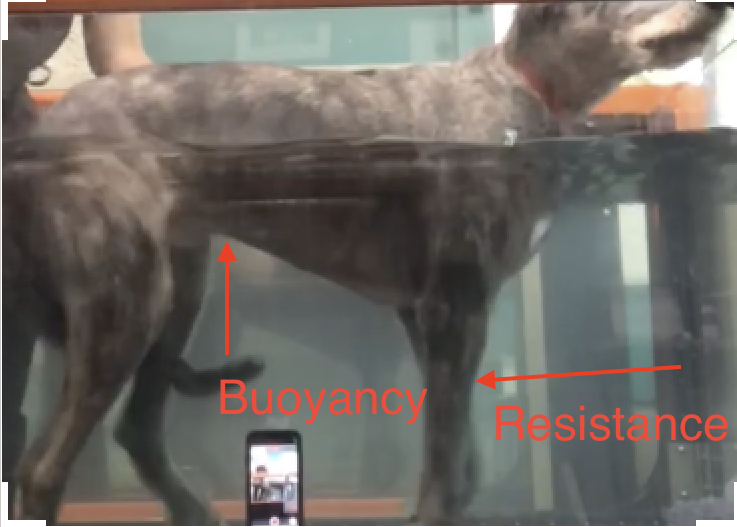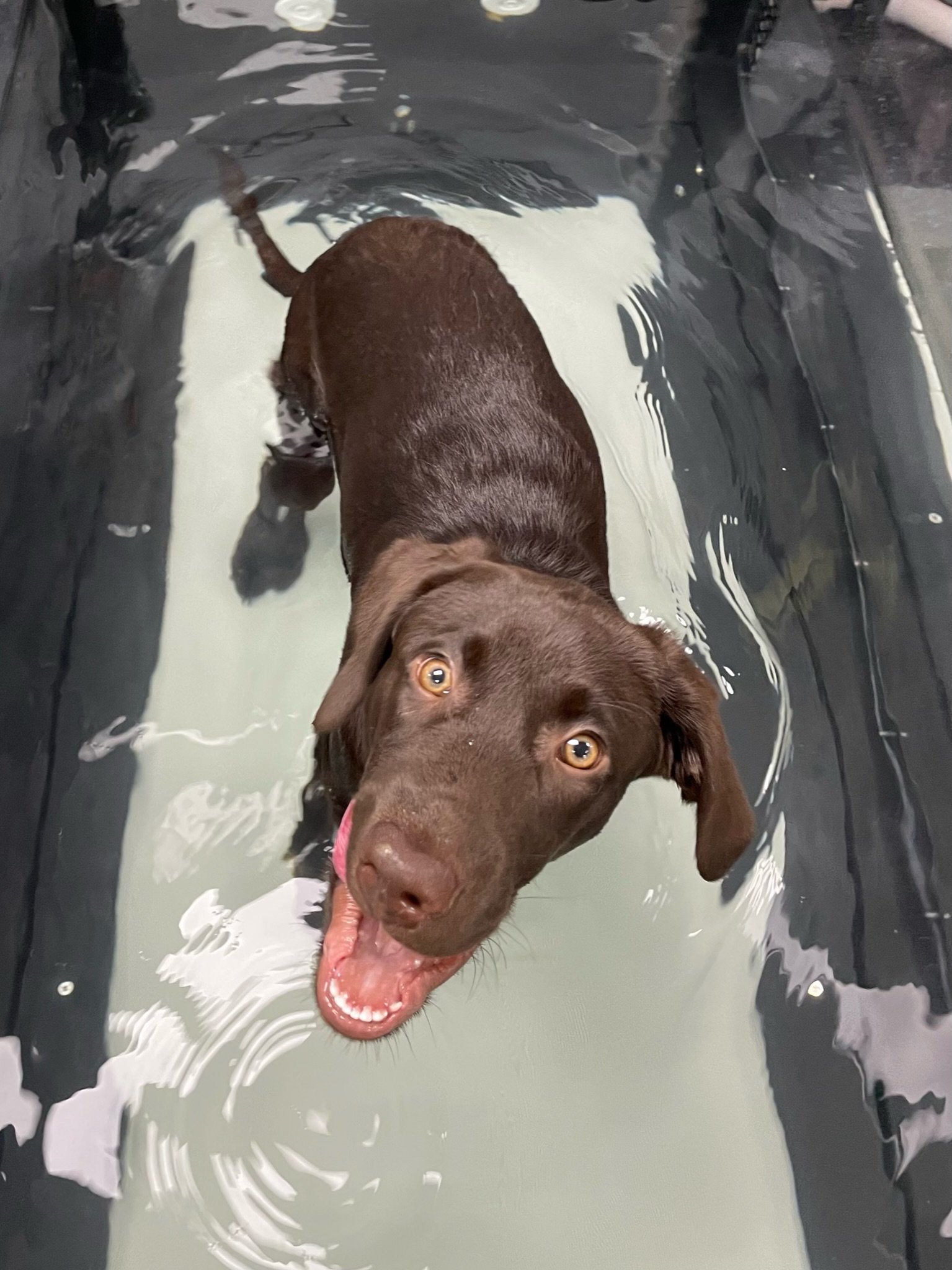August 2024
Dear Clients,
We hope you and your pets are staying cool on these hot summer days. In honor of keeping us cool, our monthly deep dive is on our underwater treadmill therapy also referred to as hydrotherapy (water therapy).
Hydrotherapy uses the buoyancy of water to remove weight off of the patient’s joints while creating resistance through the water to increase strength. Let’s break these concepts down:
Buoyancy= Water creates an upward thrust thereby reducing compressive forces on joints. This is the reason you can float in water.
Resistance= The fluid molecules of water create frictional resistance of objects moving through. Water is 15 times more viscous than air, requiring more effort to walk through it. Water at shoulder level in humans requires 65% more effort than walking on land, thereby improving the strength gained during the workout.
Hydrostatic Pressure= The fluid pressure of water exerted on the body, reduces edema and pooling of fluids, which encourages healing and improves pain management.
When a treadmill is added into the water, the forces of gravity begin to play a role on the patient. The pull of gravity stimulates healing and builds strength of the bones, muscles and ligaments. Without gravity, our bones and muscles would become weak. Think of the first astronauts who were unable to walk out of their space capsules until “gravitational” exercises were incorporated into the space program.
While walking in the underwater treadmill, the resistance of the water increases strength of muscles that are normally used while walking. Essentially creating more overload of the muscles to build strength to accommodate to the increased pressure resulting in fasting improvements in strength.
If we alter the level of the water a patient is walking in, we can increase the range of motion of specific joints. This is particularly helpful for post-op patients with reduced range of motion. The water level encourages the patient to try and “step over” the water thereby resulting in improved range of motion.
Why use underwater treadmill rather than swimming?
Swimming encourages forelimb exercise and cardiovascular exercise, but most dogs minimally use their rear end while swimming. As mentioned, the underwater treadmill utilizes gravitational forces which aids in bone healing and strength, which is key with post-op knee surgeries, fractures, and weakened bones and muscles. Additionally instead of training a swimming gait, the underwater treadmill allows us to coach a normal walking or trotting gait, particularly in our neurologic patients who are relearning how to walk.
Why underwater treadmill rather than land treadmill?
The underwater treadmill has the added benefit of buoyancy, reducing the weight on the joints and hydrostatic pressure to improve pain management.
Summary of Benefits of underwater treadmill:
Increases muscles that are used minimally on land
Increases range of motion in a joint
Eliminates concussive forces to reduce joint stress
Improves pain management
Will my pet be painful or sore after underwater treadmill?
There can be some soreness experienced after treadmill, as new muscles are being used and joints acquiring new range of motion. 24-48 hours of mild soreness is all we would want. If there is worse or prolonged soreness, please let use know, so that we can better manage your pet’s pain and regulate the next session to produce the desired effect without the discomfort.
If you have any other questions about underwater treadmill, please reach out to the staff at info@flvetrehab.com
Staff Updates
We are expanding our staff to better suit you and your pets needs. If you see a new face please welcome them to the FVR family!
Have a very safe month and we will see you soon!
Peace and Love,
Dr. Lisa Mason



